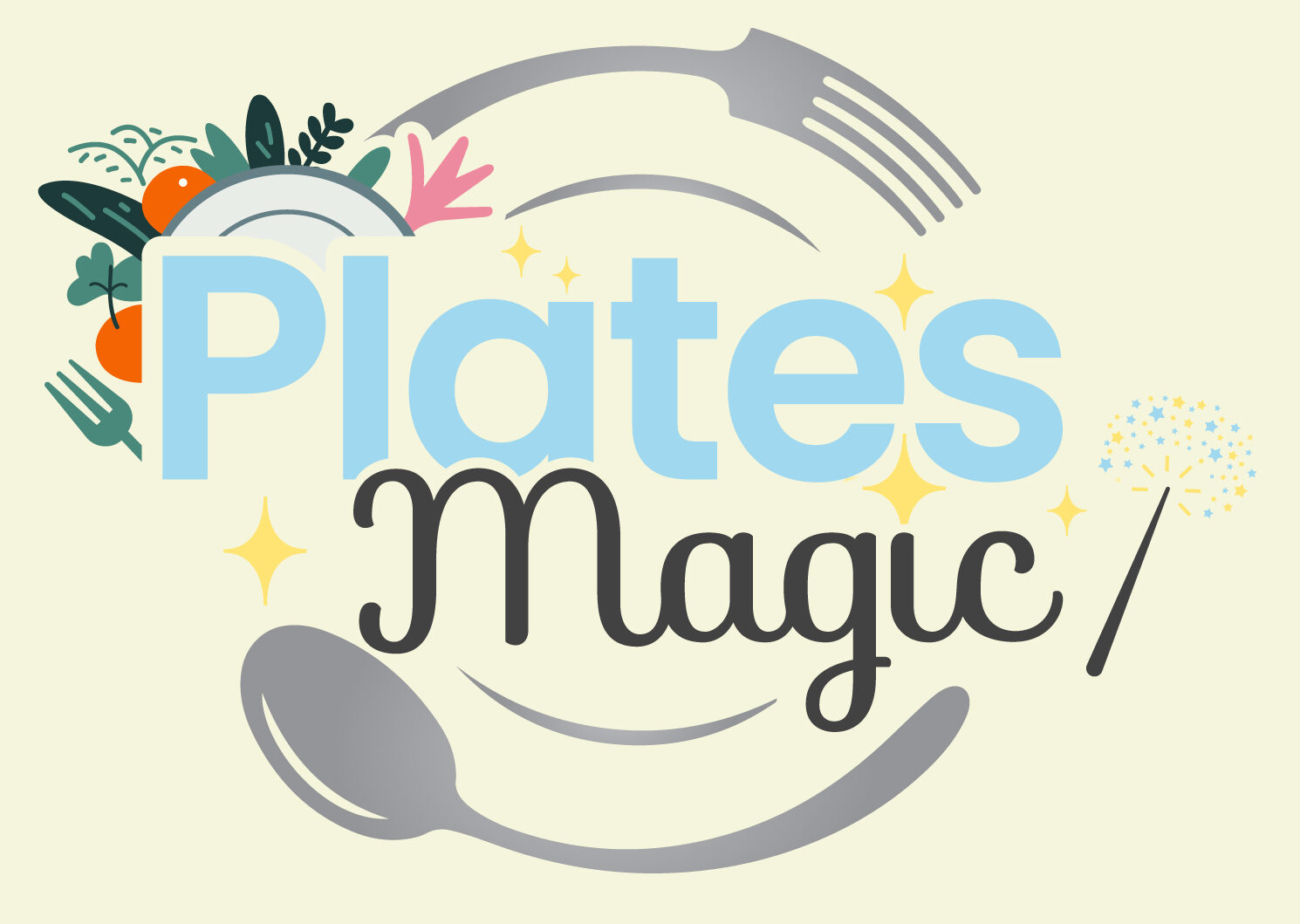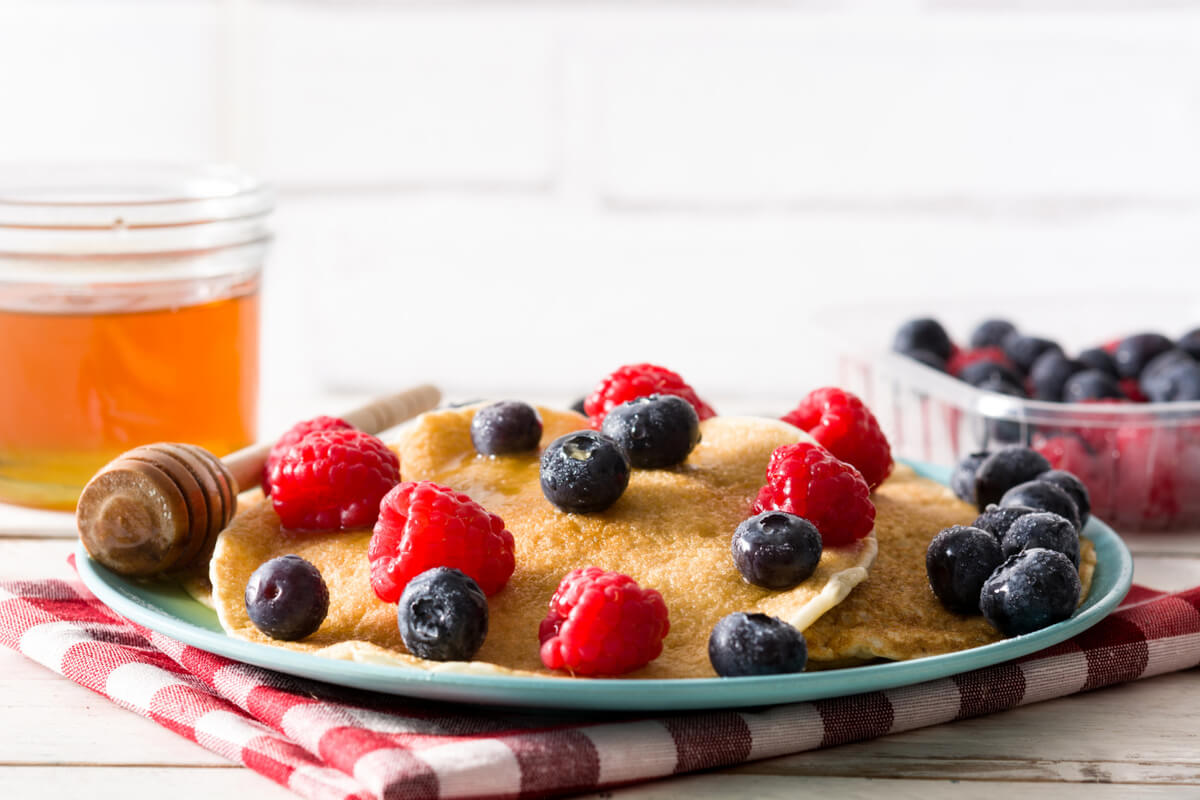Introduction
Pancakes have long been a favorite breakfast treat, enjoyed in countless variations around the world. Fluffy, warm, and versatile, they are often topped with syrup, butter, or fruits, making them a go-to comfort food. However, the question arises: What is the healthiest type of pancake? Traditional pancakes, typically made with refined flour and sugar, are not always the most nutritious option, leading many to associate them with unhealthy eating habits.
This article aims to change that perception by exploring healthier pancake alternatives. From nutrient-packed ingredients to calorie-conscious recipes, we’ll discuss how you can enjoy pancakes while maintaining a balanced diet. Whether you’re focused on heart health, weight loss, or simply eating better, there are endless ways to adapt pancakes into a guilt-free, nutritious choice.
2. The Basics of Pancakes
What Are Pancakes?
Pancakes are one of the most versatile breakfast dishes, cherished across cultures and cuisines. These flat, round cakes are made by cooking batter on a hot griddle or skillet. Their history dates back to ancient civilizations, where variations of pancakes were made using simple ingredients like grain flour and water.
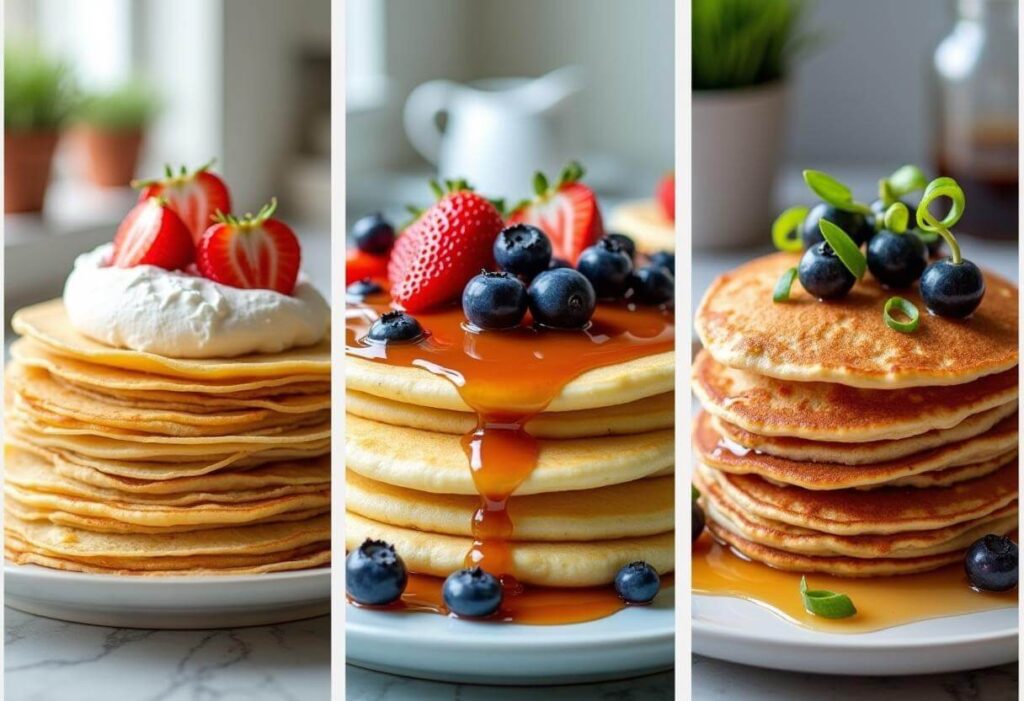
Globally, pancakes come in countless forms. For example, French crêpes are thin and delicate, while American pancakes are fluffy and thick. In Asia, you’ll find savory versions like Chinese scallion pancakes, and in Africa, injera is a sour, spongy pancake made with teff flour. Despite the variations, the basic idea remains the same: a cooked batter that serves as a blank canvas for endless flavors.
Traditional pancakes are typically made with ingredients like refined flour, sugar, eggs, and milk. While delicious, these ingredients can sometimes make pancakes less nutritious when consumed regularly or in large portions.
Nutritional Profile of Traditional Pancakes
Traditional pancakes are high in carbohydrates due to their base of refined flour. A single serving of plain pancakes (two 4-inch pancakes) provides:
- Carbohydrates: ~30g
- Fats: ~5g (higher if cooked with butter or oil)
- Proteins: ~4g
While these macronutrients provide energy, traditional pancakes lack fiber and essential nutrients found in whole-grain alternatives. Furthermore, they often include added sugar, which can lead to rapid spikes in blood sugar levels. Toppings like syrup or whipped cream add even more calories and sugar.
This nutritional profile can make pancakes a less favorable choice for those focused on heart health, weight management, or reducing processed foods. However, with simple ingredient swaps, pancakes can be transformed into a much healthier meal option. Traditional pancakes, made with refined flour and sugar, lack the fiber and nutrients necessary for sustained energy. Learn more about refined flour and its impact on health here.
3. Healthiest Pancake Ingredients
Whole-Grain Flours for Better Nutrition
The type of flour used in pancakes significantly impacts their nutritional value. Whole-grain flours like whole wheat, oat, almond, and buckwheat are excellent options to boost pancake health.
- Whole Wheat Flour: High in fiber and nutrients like B vitamins and magnesium, this flour helps regulate blood sugar and promotes digestion.
- Oat Flour: Rich in beta-glucans, oat flour can lower cholesterol and keep you feeling full longer.
- Almond Flour: Gluten-free and packed with healthy fats, vitamin E, and protein, it’s ideal for keto and low-carb diets.
- Buckwheat Flour: Despite its name, it’s gluten-free and full of antioxidants, protein, and minerals like magnesium and zinc.
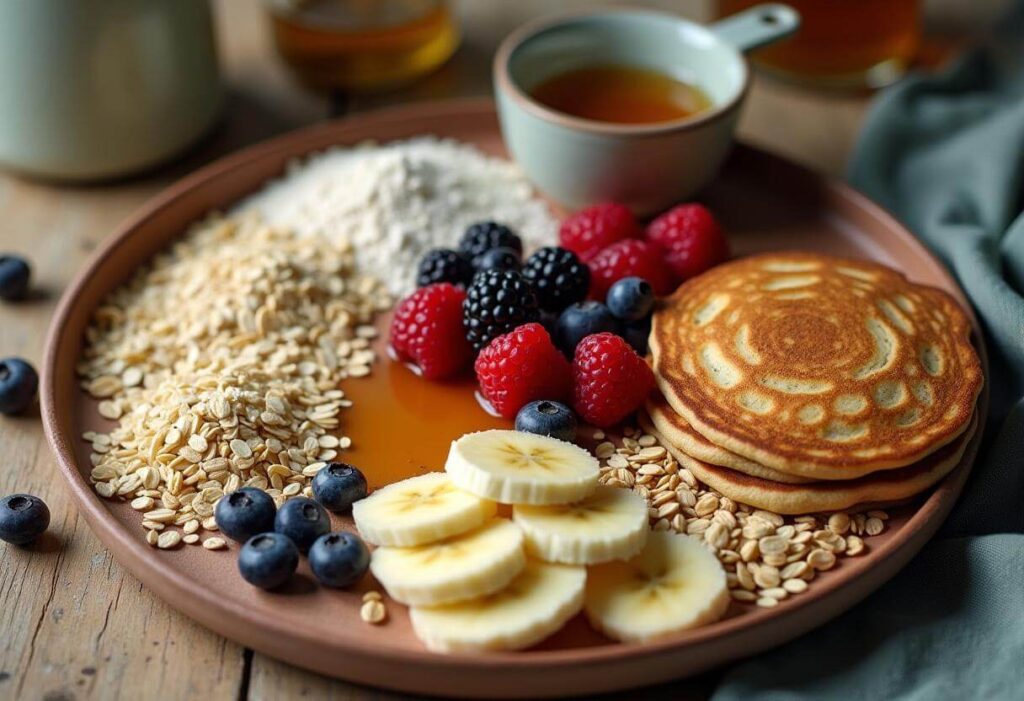
In comparison, refined flours are stripped of nutrients during processing, leaving them with little more than empty calories. Choosing whole-grain flours not only adds flavor but also ensures your pancakes provide long-lasting energy and essential nutrients.
Low-Calorie Sweeteners and Flavor Boosters
Traditional pancake recipes often rely on sugar for sweetness, but there are healthier alternatives:
- Stevia: A plant-based, calorie-free sweetener that doesn’t affect blood sugar levels.
- Honey and Maple Syrup: While natural, these should be used sparingly as they still contain sugars.
- Fruits: Mashed bananas, applesauce, or pureed berries can naturally sweeten pancakes while adding fiber and vitamins.
Artificial sweeteners like aspartame or sucralose are low in calories but come with potential health concerns. Research suggests that they may disrupt gut health and lead to increased sugar cravings. Opting for natural sweeteners or fresh fruits is a safer and more wholesome choice.
Healthy Add-Ins
Incorporating nutrient-dense ingredients into the batter takes pancakes to the next level:
- Chia Seeds and Flaxseeds: High in omega-3 fatty acids and fiber, they enhance satiety and improve digestion.
- Protein Powders: Ideal for fitness enthusiasts, they can boost the protein content without altering the flavor.
- Vegetables: Adding pureed zucchini, spinach, or even sweet potatoes to the batter increases fiber and vitamin content, creating a more balanced meal.
These ingredients ensure your pancakes are not only delicious but also packed with nutrients that support overall health.
4. Healthy Pancake Recipes
Quick and Easy Recipes for Every Diet
Making healthy pancakes at home is easier than you think. Below are examples of recipes tailored to various dietary needs:
- Healthy Pancake Recipe Low Calorie:
Combine 1 cup of oat flour, 1 mashed banana, 1 egg, and ½ cup of unsweetened almond milk. Add a pinch of cinnamon for flavor. Cook on a non-stick pan until golden brown. Each serving is around 150 calories, perfect for weight-conscious individuals. - Protein-Packed Pancakes:
Mix ½ cup of almond flour, 2 scoops of protein powder, 2 eggs, and ¼ cup of unsweetened almond milk. Optional add-ins include chia seeds or a handful of blueberries. This recipe delivers over 20 grams of protein per serving, making it ideal for fitness enthusiasts. - Gluten-Free and Vegan Pancakes:
Blend 1 cup of gluten-free flour, 1 tablespoon of ground flaxseed mixed with 2 tablespoons of water (flax egg), 1 cup of plant-based milk, and 1 teaspoon of baking powder. Sweeten with a tablespoon of maple syrup. These pancakes are fluffy, allergy-friendly, and packed with nutrients. For more vegan options, check out these creative vegan breakfast recipe ideas that go beyond pancakes.
Pro Tips for Cooking Healthy Pancakes
- Use Non-Stick Pans or Minimal Oil:
A non-stick pan or griddle eliminates the need for excess butter or oil. If needed, opt for a light spray of avocado or coconut oil for healthier fats. - Ideal Cooking Temperatures for Even Results:
Cook pancakes over medium heat to avoid burning. Flip them once bubbles form on the surface and the edges look set. Maintaining the right temperature ensures golden, evenly cooked pancakes every time.
Experiment with these recipes and tips to make breakfast healthier and more enjoyable for everyone.
5. Comparing Pancake Types: Which Is the Healthiest?
Whole Grain vs. Regular Pancakes
When comparing whole grain and regular pancakes, the difference lies in the nutritional value of the flour used. Regular pancakes made with refined flour are often calorie-dense but lack essential nutrients like fiber, vitamins, and minerals. On the other hand, pancakes made with whole-grain flours like whole wheat or buckwheat are rich in dietary fiber, which aids digestion and promotes heart health.
For instance, a serving of whole-grain pancakes provides more B vitamins and magnesium, essential for energy production and muscle function. Additionally, the fiber in whole-grain pancakes helps stabilize blood sugar levels, making them a better choice for those managing diabetes or seeking sustained energy throughout the day.
Protein Pancakes vs. Regular Pancakes
Are protein pancakes healthier than regular pancakes? The short answer is yes, especially for those with active lifestyles or muscle-building goals. Protein pancakes incorporate protein-rich ingredients like eggs, Greek yogurt, or protein powder, delivering a higher protein-to-carb ratio than regular pancakes.
Protein supports muscle repair and satiety, making these pancakes ideal for post-workout meals or weight loss. For example, a single serving of protein pancakes can contain up to 20 grams of protein, compared to just 4 grams in traditional recipes. Furthermore, protein helps regulate appetite, reducing the likelihood of overeating later in the day.
Gluten-Free and Vegan Pancakes
For individuals with dietary restrictions or allergies, gluten-free and vegan pancakes provide excellent alternatives. Gluten-free pancakes made with flours like almond, coconut, or chickpea cater to those with gluten intolerance or celiac disease. These options are nutrient-dense and often higher in healthy fats and fiber.
Similarly, vegan pancakes eliminate animal products, substituting ingredients like flax eggs or plant-based milk. They are lower in cholesterol and saturated fat, making them heart-friendly. Whether for ethical reasons or health concerns, these alternatives ensure everyone can enjoy pancakes without compromise.
Choosing the healthiest pancake depends on your individual needs, but whole-grain, protein-rich, or allergy-friendly options are all superior to traditional recipes.
6. Pancakes for Heart Health and Weight Loss
Are Pancakes Bad for Your Heart?
Can pancakes be healthy? Yes, they absolutely can—if made with the right ingredients and methods. Traditional pancakes, however, often come with a downside. Made with refined flour, added sugar, and high-fat toppings like butter and syrup, they can contribute to elevated cholesterol levels and increased heart disease risk.
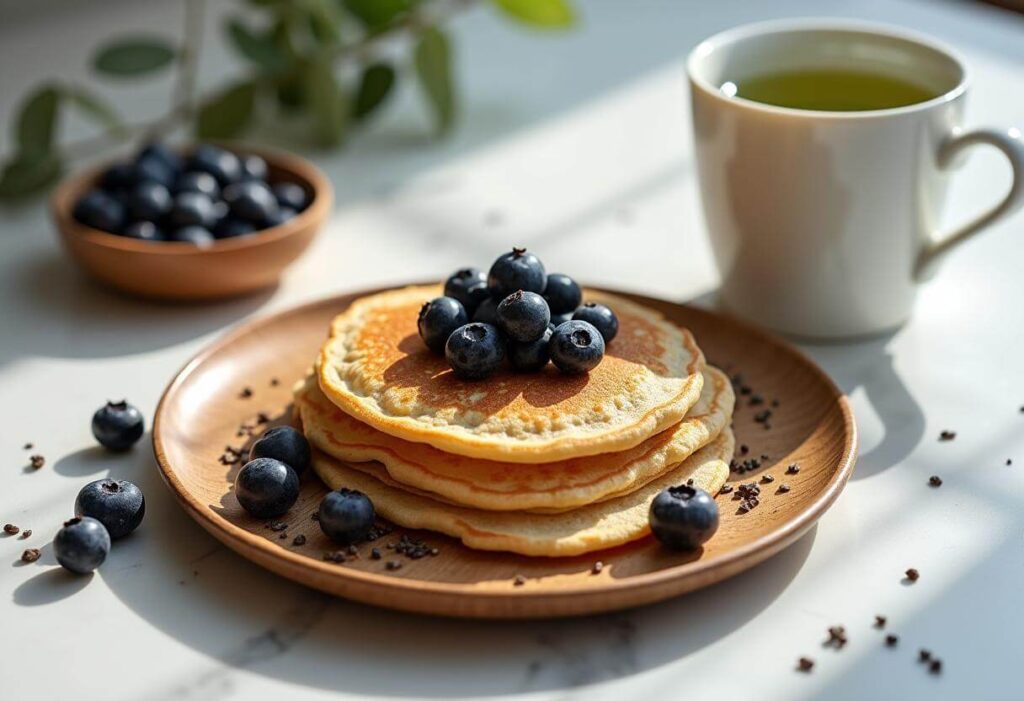
The main concerns lie in the high glycemic index (GI) of refined flour, which can cause blood sugar spikes, and the unhealthy saturated fats found in some toppings. Consistently consuming such pancakes may lead to weight gain and higher levels of LDL (bad cholesterol). Incorporating heart-friendly ingredients like whole grains and berries aligns with broader heart-healthy eating strategies recommended by experts.
Modifications for Heart-Healthy Pancakes:
- Use whole-grain or almond flour for added fiber and healthy fats.
- Substitute sugar with natural sweeteners like mashed banana or applesauce.
- Incorporate heart-friendly fats like olive oil or avocado instead of butter.
- Top pancakes with fresh berries, which are rich in antioxidants and support heart health.
These simple swaps can transform pancakes into a meal that supports rather than harms your cardiovascular health.
Is Pancake Healthy for Weight Loss?
Pancakes can be a part of a weight loss diet if they are calorie-conscious and nutrient-dense. The key is focusing on ingredients that provide more nutrition per calorie and maintaining proper portion sizes.
Key Factors for Low-Calorie Pancakes:
- Replace refined flour with low-calorie options like oat or coconut flour.
- Limit the use of added sugar, opting for fruits or a drizzle of honey instead.
- Avoid frying pancakes in oil; use a non-stick pan to minimize fat content.
Tips on Portion Control and Pairing:
- Stick to smaller pancakes (4–5 inches in diameter) and limit servings to 2–3 pancakes.
- Pair pancakes with lean proteins like Greek yogurt or a boiled egg to create a balanced meal.
- Use light toppings such as sugar-free syrup or a dollop of unsweetened almond butter for flavor without unnecessary calories.
When prepared with these adjustments, pancakes can satisfy your cravings while fitting into a healthy lifestyle. The combination of heart-healthy ingredients and mindful portioning ensures they are both delicious and nutritious.
7. The Healthiest Way to Enjoy Pancakes
Toppings That Add Nutrition Without Extra Calories
Choosing the right toppings can elevate the nutritional value of pancakes while keeping calories in check. Fresh fruits like berries, bananas, or apple slices are excellent choices. They are rich in vitamins, fiber, and antioxidants, enhancing the pancakes’ flavor naturally.
Nut butters, such as almond or peanut butter, add healthy fats and protein, making pancakes more filling. Greek yogurt is another fantastic topping, offering a creamy texture with added protein and probiotics. For those who love syrup, sugar-free options made with natural sweeteners like monk fruit or stevia are a healthier alternative.
It’s best to avoid processed toppings like whipped cream, chocolate syrups, or heavily sweetened jams, which are high in added sugars and unhealthy fats. These can quickly turn a healthy breakfast into a calorie-laden indulgence.
Smart Pairings for a Balanced Breakfast
Pairing pancakes with other nutritious foods ensures a well-rounded meal. For added protein, consider serving them alongside scrambled eggs or a boiled egg. Smoothies packed with spinach, berries, and plant-based milk can provide additional nutrients and a refreshing contrast. Fresh juices, particularly those made from whole fruits, complement pancakes with a dose of natural sweetness and hydration.
These thoughtful combinations create a balanced breakfast that keeps you energized throughout the day. For more pairing ideas for breakfast classics, consider this croissant French toast breakfast guide.
8. Frequently Asked Questions (FAQ)
Which Pancakes Are the Healthiest?
The healthiest pancakes are those made with nutrient-rich ingredients and minimal processed components. Pancakes made from whole-grain flours like oat, almond, or buckwheat are healthier than those made with refined flour. Adding protein-rich elements like Greek yogurt, protein powder, or eggs boosts their nutritional value. Avoiding added sugar and opting for natural sweeteners or fruits makes them even better. Choosing gluten-free or vegan pancakes can also cater to specific dietary needs while remaining healthy and flavorful.
What Is the Healthiest Way to Eat Pancakes?
Eating pancakes mindfully involves focusing on portion sizes and pairing them with nutritious toppings and sides. Limit servings to 2–3 medium-sized pancakes and avoid calorie-dense additions like butter and syrup. Opt for toppings like fresh fruits, nut butters, or Greek yogurt to keep your meal balanced. Pair pancakes with a side of eggs or a smoothie to ensure a good mix of macronutrients. Eating slowly and savoring each bite helps prevent overeating and enhances your breakfast experience.
Are Pancakes Healthy Without Syrup?
Yes, pancakes are significantly healthier without traditional syrup, which is often loaded with sugar and empty calories. Instead, top them with alternatives like mashed fruit, a drizzle of honey, or sugar-free syrups. These options provide flavor without the sugar spikes associated with syrup, making pancakes a much healthier choice.
9. Conclusion
Healthy pancakes are not only possible but easy to achieve with a few thoughtful changes to ingredients and preparation methods. By using whole-grain flours, natural sweeteners, and nutrient-rich add-ins, you can transform a traditionally indulgent breakfast into a wholesome and satisfying meal. Pairing these healthier pancakes with fresh fruits, Greek yogurt, or protein-rich sides creates a balanced breakfast that aligns with your health goals.
What is the healthiest type of pancake? It’s the one made with high-quality, nutrient-dense ingredients tailored to your dietary needs. Whether it’s a protein-packed option, a vegan-friendly recipe, or a gluten-free alternative, there’s a pancake for everyone.
Now it’s your turn to experiment. Try the recipes, explore new combinations of toppings, and make breakfast both enjoyable and nutritious. With these tips, pancakes can become a guilt-free staple in your healthy lifestyle.
